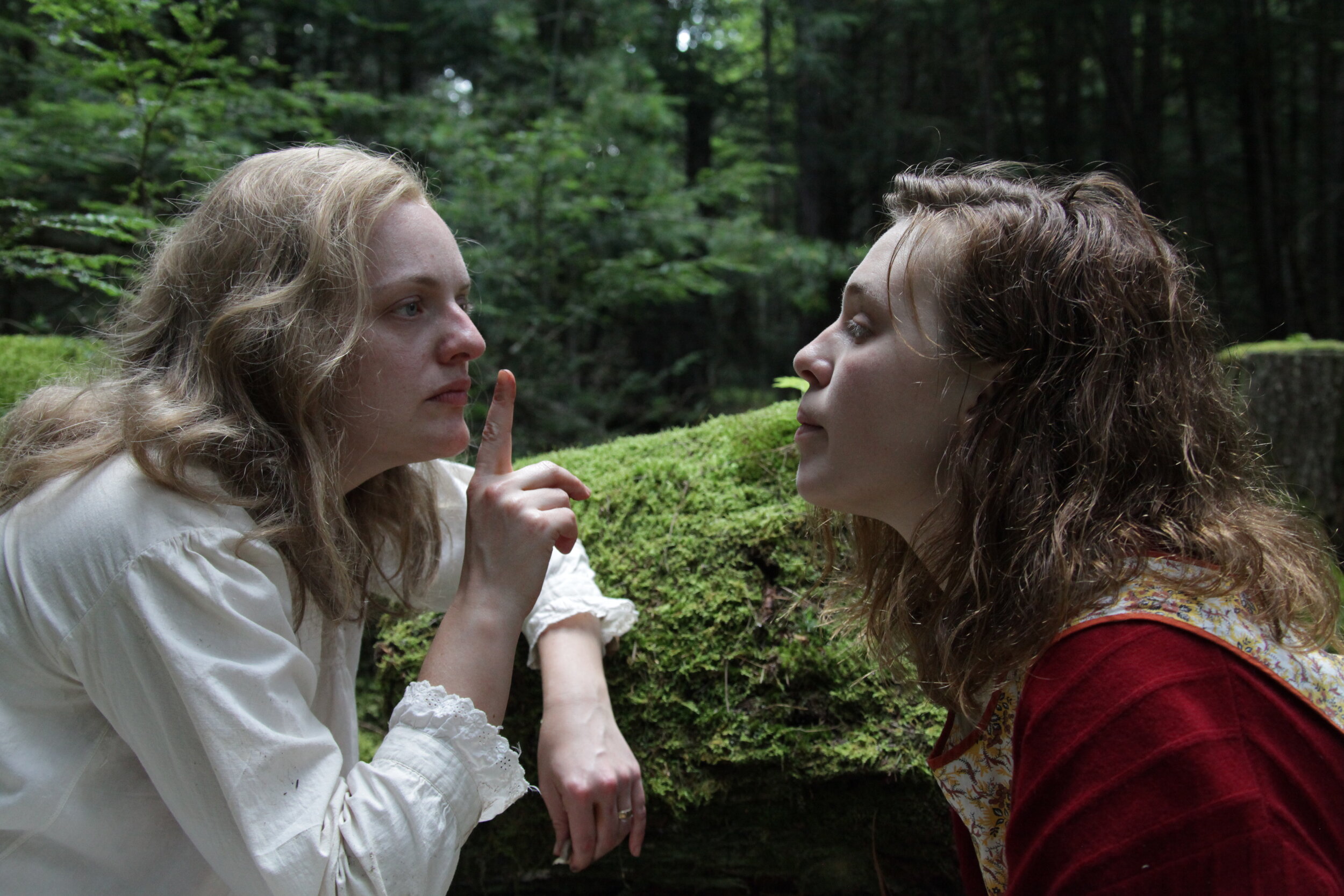Pi@LFF: Review of 'Shirley' by Josephine Decker
Featured in the BFI London Film Festival 2020, Josephine Decker’s anti-biopic “Shirley” examines the effects of artistic production and the dangers inherent in creative processes.
Source: image.net
Josephine Decker’s literary psychodrama “Shirley” is an oneiric probe into the interior and exterior worlds of horror writer Shirley Jackson. The film is an exploration of obsession in its pathological form, a debilitating case study of the female psyche. Elisabeth Moss, starring as the titular character, navigates the symbiotic intersections of desire and insanity, where insanity is both provoked by, and symptomatic of, desire. Rather than looking at the specific perversity of a particular desire, Decker suggests that there is an illogicality implicit in all infatuations – literature, friendship, love, art.
Fred (Logan Lerman), a youthful professor, and his new bride Rose (Odessa Young) arrive at the house, adorned with ivy and fairytale-like in its enchantment. Decker plays out a gothic doubling of the couples, who inevitably merge in the claustrophobic (both in the single location and the cloistering sexism) vertigo of chaos. The rich use of strings echoes the fraught, bowstring tension that is etched into the frequent silences. The dinner table is a site for homoerotic footsie, academic power games, and it is also where we hear the witty and aphoristic writer’s dialogue between Stanley and Shirley, both consumed by language and intellectual pursuit.
Stanley, played by Michael Stuhlbarg, is a creepy college professor with an artificial grandeur, who exploits the artistic talents of his wife, and evokes the husband of “The Yellow Wallpaper” in his persistent pathologising of her. He is a college predator, yet, despite his thinly veiled adultery, he and Shirley co-exist in an unsettling mutual dependency until Rose provokes her into exploring her female subjectivity. In the close-up shots that lurk over his shoulder, Stuhlbarg masterfully embodies the subtle unease of Stanley, as agoraphobic Shirley shifts from her proscribed space and Fred replaces him as the object of female college students’ desire. His nervousness manifests itself in an intense, often frenetic, physicality, dancing to the eerie rhythm and blues which are his leitmotif.
Source: image.net
Shirley’s imagination becomes increasingly fervid, constructing an external reality in which she is no longer able to distinguish between fantasy and actuality. In fact, Rose becomes a distillation of her fantasy, a proxy for the missing college girl at the centre of Shirley’s novel, and thus becomes her muse. Indeed, rather than lovers, the two operate an artist-muse dynamic, a dynamic which, like any extreme form of fixation, is permeated by violence. As well as her model, Rose is her creative collaborator, adding a complexity to their intimacy as Rose seeks to please her. As Shirley looks at Rose with her female gaze, she simultaneously abuses and liberates her, fuelling her artistic process as she becomes undone. The livewire of libidinal tension is not manifested in romantic kisses but rather the eventual fusion of the two women, as Rose descends with Shirley so that she may ultimately emerge with her own agency. By the end, Rose suggests that the real modern madwoman is the housewife.
Sturla Brandth Grøvlen’s stylised cinematography plays out Rose’s spellbound fascination with Shirley through the fractured dream sequences which bring “Shirley” its spectral feel. Moss is indeed bewitching, with facial inflections that distort and delight. Grøvlen makes use of mirrors and reflection to explore modes of representation akin to those enacted in literature, creating a duality as Shirley struggles to envision the protagonist of her novel. Rose asks her baby “what do you see?” in the mirror, and the act of looking and being looked at, whether Rose’s voyeuristic peering through cracks in the door or Shirley’s quasi-telepathic observations, becomes a central theme of the film, which ultimately suggests that the only real way to be seen is by disappearing.
Source: image.net
Much of the film has to do with the artistic process and the idea of writing as a visceral and inherently dangerous act. The opening scene evokes the titillative power of horror stories: upon reading Jackson’s “The Lottery”, in which a mother is stoned to death, Rose becomes aroused. At parties, other characters discuss the unhinging yet cathartic powers of her writing, and “Shirley” reveals itself to be an analysis of the consumption and construction of horror. On the other hand, Moss captures the emotional and sometimes physical vulnerability of creation, where the artist may become subsumed into the character they are writing – which is precisely what Decker does here, as Shirley plays out like one of the witches of her novels. Latent beneath the mayhem is an acute observation of the link between creativity and mental illness.
“Shirley” is constructed around thresholds: between stability and instability, between character and writer, and between mortality and death, yet it suggests the ease at which these binaries can be crossed, akin to stepping off a cliff.



